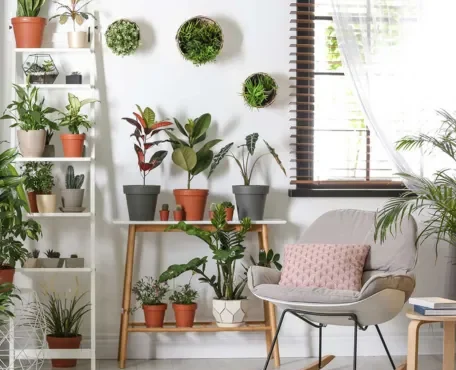
Renovate Home: Super Budget Ways to Transform Your Space
Home renovation can be an exciting yet expensive endeavor. Many homeowners dream of transforming their living spaces, but the cost can often be a deterrent. However, it doesn’t have to break the bank to give your home a fresh and updated look. With some creativity, resourcefulness, and careful planning, you can achieve remarkable home improvements on a budget.
In this article, we will explore super economical ways to renovate your home, allowing you to enhance your living space without draining your savings.
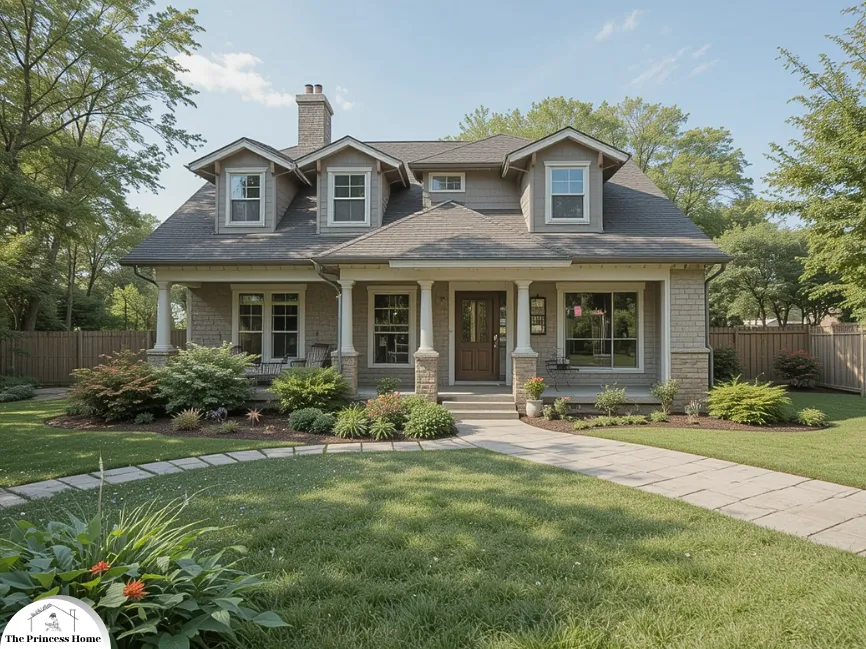
1.Plan & Budget Wisely:
The foundation of any successful home renovation project is a well-thought-out plan and budget. Before starting, assess your home’s needs, create a list of priorities, and set a budget that you are comfortable with. Sticking to a budget will help you avoid overspending and make more economical choices throughout the renovation process. Here are some helpful points to consider when planning and budgeting for a home renovation project:
Assess Your Needs & Prioritized List:
Take a close look at your home and identify areas that require renovation or improvement. This could include outdated fixtures, worn-out flooring, or structural issues. Once you’ve identified the areas that need attention, create a list of priorities. Determine which renovations are essential and which ones can wait. This will help you focus your resources on the most critical aspects of the project.
Budget & Research Costs:
Determine how much you are willing to spend on the renovation project. Be realistic about your financial situation and avoid overstretching yourself. Consider factors such as materials, labor costs, permits, and unexpected expenses. Research the costs associated with the renovations you plan to undertake. Get quotes from contractors, suppliers, and other service providers to get a better idea of how much you’ll need to budget for each aspect of the project.
Contingency Funds & Your Budget:
It’s essential to set aside a contingency fund for unexpected expenses that may arise during the renovation process. Aim to allocate around 10-20% of your total budget for contingencies to account for any surprises. Once you’ve set a budget, make a commitment to stick to it. Avoid making impulse purchases or unnecessary upgrades that can quickly inflate costs. Regularly review your budget and track expenses to ensure you’re staying on track.

2.DIY Economical Projects:
One of the most cost-effective ways to renovate your home is by taking on do-it-yourself (DIY) projects. There are numerous resources available online, from video tutorials to step-by-step guides, that can help you tackle various tasks, such as painting, small repairs, or even building custom furniture. By doing the work yourself, you can save money on labor costs and gain a sense of accomplishment. Here are some helpful points to consider when undertaking DIY:
Small Projects & Revamp:
If you’re new to DIY, start with smaller projects that are manageable and require less specialized skills or tools. This could include painting a room, installing shelves, or updating cabinet hardware. Starting small allows you to gain confidence and skills before tackling larger projects. Improving your home’s curb appeal doesn’t have to be expensive. Simple tasks like painting the front door, updating the mailbox, trimming bushes, and planting flowers can make a big difference. A welcoming exterior can set the tone for the entire home.
Reuse & Salvage Materials:
Before discarding old materials during a renovation, consider if any can be salvaged and repurposed. For instance, old barn wood can be transformed into rustic wall paneling or furniture, while reclaimed bricks can be used for a charming garden pathway. Salvaging materials not only saves money but is also environmentally friendly Look for opportunities to reuse materials or repurpose items you already own. This can help save money on material costs and reduce waste. Get creative and think outside the box to find innovative ways to update your home without breaking the bank.
Your Time & Safety First:
Rushing through a DIY project can lead to costly mistakes and unsatisfactory results. Take your time to plan and execute each step carefully, and don’t be afraid to ask for help or seek advice if you encounter challenges along the way. Always prioritize safety when undertaking DIY projects. Wear appropriate protective gear, follow safety guidelines, and take precautions to prevent accidents or injuries. If you’re unsure about how to safely complete a task, seek guidance from experienced DIYers or professionals.
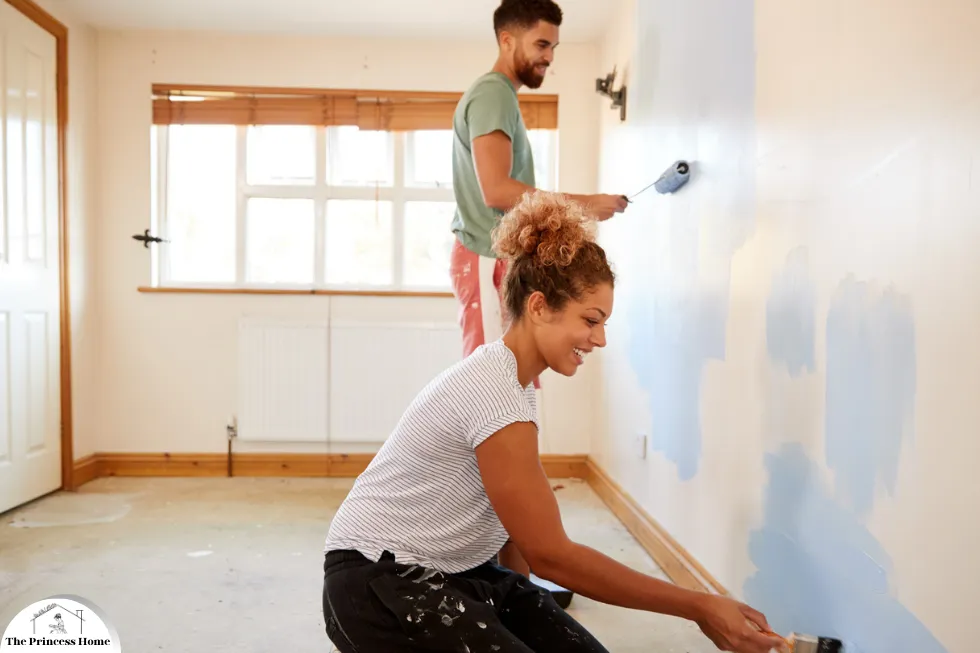
3.Fresh coat of paint:
A fresh coat of paint can instantly transform a room and is one of the most affordable ways to give your home a facelift. You can experiment with different colors and finishes to achieve the desired ambiance. Choosing the right paint color can make a small room appear larger or create a cozy atmosphere in a larger space. Don’t forget to prep the surfaces properly to ensure a professional-looking finish. Here are five helpful points to consider when painting your home for a budget-friendly facelift:
Colors & Quality Paint:
Selecting the right paint colors can significantly impact the overall look and feel of a room. Lighter colors can make a space feel more open and airy, while darker hues can add warmth and coziness. Consider the mood you want to create and how the color will complement your existing décor. While it may be tempting to choose the cheapest paint option available, investing in quality paint can save you time and money in the long run. Higher-quality paints typically offer better coverage, durability, and color retention, resulting in a more professional-looking finish that lasts longer.
Prep the Surfaces & Finishes:
Proper surface preparation is essential for achieving a smooth and long-lasting paint finish. This includes cleaning the walls, repairing any cracks or holes, sanding rough surfaces, and applying a primer if necessary. Taking the time to prep the surfaces properly will ensure better adhesion and a flawless result. Beyond just choosing colors, consider experimenting with different paint finishes to add visual interest to your space. Matte finishes are great for hiding imperfections and creating a subtle, elegant look, while satin or semi-gloss finishes offer durability and are easier to clean, making them ideal for high-traffic areas like kitchens and bathrooms.
By considering these helpful points, you can effectively use paint to refresh and revitalize your home’s interior while staying within your budget.
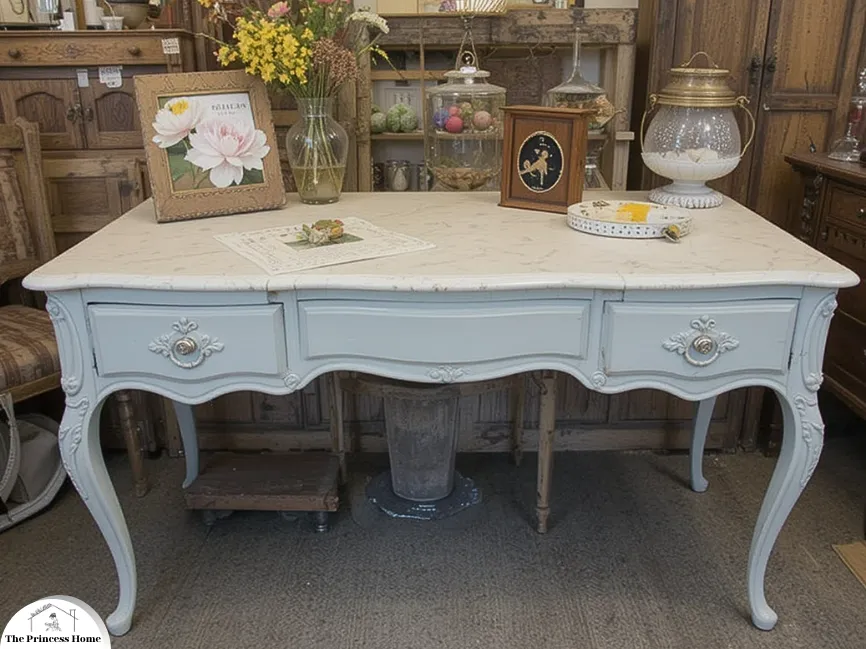
4.Upcycling &Repurposing:
Instead of buying new furniture and decor, consider upcycling or repurposing items from thrift stores, garage sales, or your own collection. Refinishing furniture or repainting frames can transform old pieces into stylish, unique additions, adding charm to your home while staying budget-friendly and eco-conscious. Here are five helpful points to consider when upcycling and repurposing items for your home:
Materials & Outside the Box::
Look beyond traditional furniture and décor materials and explore unconventional items that can be repurposed. For example, old pallets can be transformed into rustic wall shelves, vintage crates can be turned into storage units, and discarded windows can become unique photo frames or room dividers. Don’t be afraid to think outside the box and reimagine the potential of items you already own or come across. For example, an old ladder can be repurposed as a bookshelf, a vintage suitcase can be turned into a coffee table, and mismatched plates can be transformed into a colorful mosaic backsplash.
Paint & Functionality:
Refinishing and painting are simple yet effective ways to breathe new life into old furniture and décor items. Sanding down wooden surfaces and applying a fresh coat of paint or stain can completely transform the look of a piece. Similarly, repainting items like picture frames, lamps, or vases can give them a new lease on life and coordinate them with your existing décor. Repurpose items to combine functionality and style, like using a vintage trunk as a coffee table and storage or an old door as a headboard. Look for ways to meet practical needs while adding visual interest.
Embrace Imperfections:
One of the charms of upcycled and repurposed items is their character and imperfections. Embrace the patina of aged wood, the rust on metal fixtures, and the scratches on vintage finds. These elements add personality and uniqueness to your home décor and tell a story of the item’s history and journey.
By keeping these helpful points in mind, you can unleash your creativity and transform ordinary items into extraordinary treasures for your home.
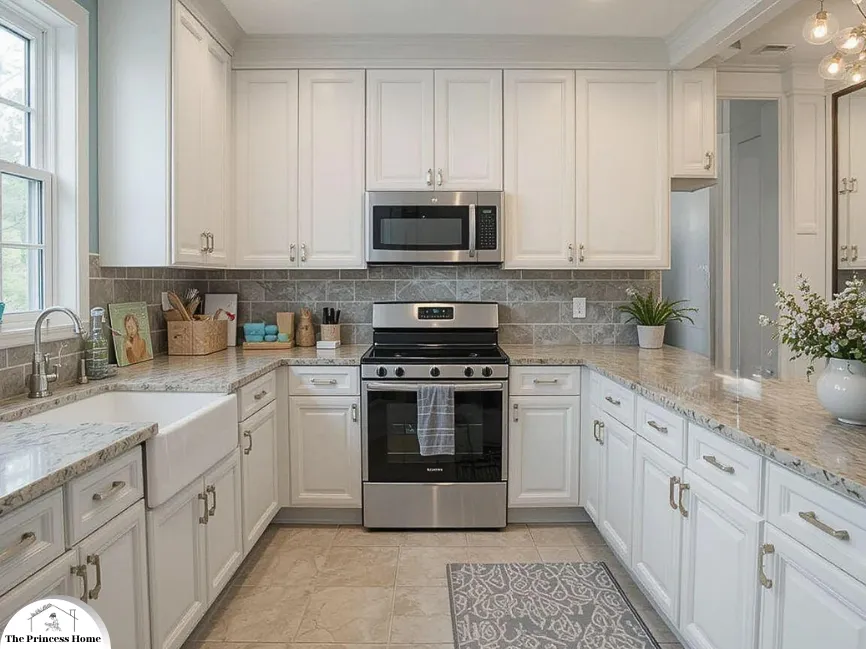
5.High-Impact Areas:
If your budget is limited, prioritize renovating high-impact areas in your home. The kitchen and bathroom are two spaces that can greatly influence the overall appeal and value of your home. You can make subtle changes, such as replacing cabinet doors, updating the backsplash, or installing a new countertop. These upgrades can significantly enhance these rooms without a complete overhaul. Focusing on high-impact areas when renovating your home is a strategic way to maximize the impact of your budget. Here are five helpful points to consider when prioritizing renovations in key areas:
Your Goals & Backsplash:
Before starting any renovations, assess your goals for the high-impact areas you want to focus on. Are you looking to improve functionality, enhance aesthetics, or increase resale value? Understanding your objectives will help you prioritize upgrades and allocate your budget effectively. Adding a backsplash in the kitchen or bathroom can be a cost-effective way to introduce color and texture. There are various budget-friendly backsplash materials available, such as peel-and-stick tiles, beadboard, or simple subway tiles. Installing a backsplash is a manageable DIY project for many homeowners.
Countertop & Long Term Maintenance:
If you’re looking to update your kitchen or bathroom countertops but can’t afford granite or quartz, consider more budget-friendly options like butcher block, laminate, or concrete. These materials can still provide a stylish and practical surface for your needs. When selecting materials and finishes for your high-impact renovations, consider their long-term maintenance requirements. Choose durable, low-maintenance materials that will withstand daily wear and tear and require minimal upkeep over time. This will help ensure that your renovations continue to look great for years to come, reducing the need for costly repairs or replacements down the line.
Maximize Value:
Choose upgrades that will maximize the value of your home and appeal to potential buyers if resale is a consideration. Focus on timeless design elements and neutral color schemes that will appeal to a broad audience. Avoid overly trendy or niche upgrades that may become outdated quickly and detract from the overall value of your home.
By focusing your renovation efforts on high-impact areas like the kitchen and bathroom and prioritizing strategic upgrades, you can enhance the overall appeal and value of your home while staying within your budget.
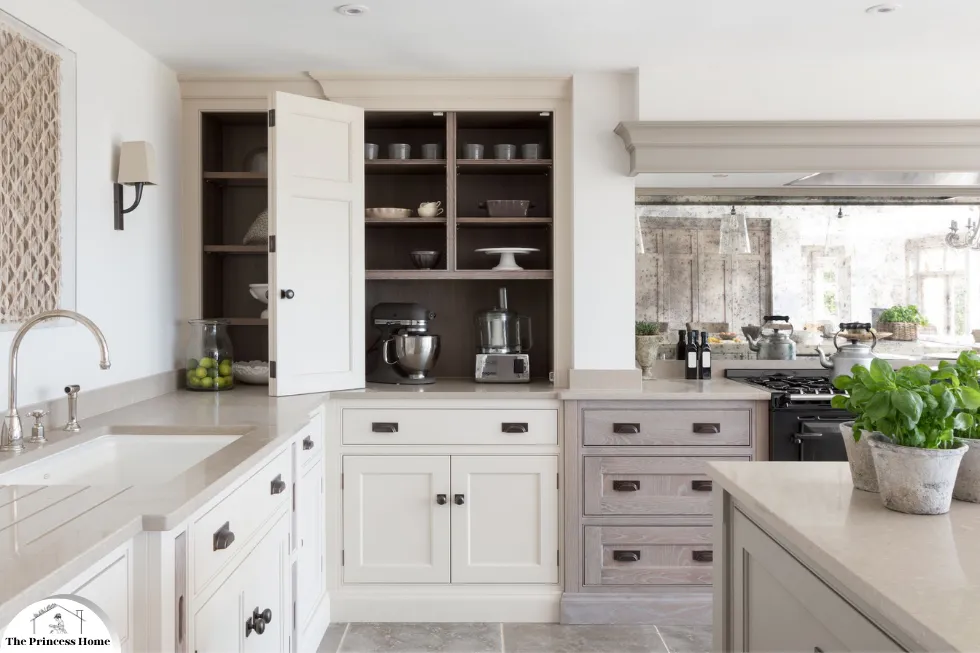
6.Update Fixtures &Hardware:
Sometimes, it’s the small details that can make a big difference in your home’s appearance. Consider updating fixtures and hardware in the kitchen and bathroom. Replacing old cabinet knobs, drawer pulls, faucets, and lighting fixtures can give these spaces a fresh, modern look without the need for a full remodel. Updating fixtures and hardware is a fantastic way to refresh the look of your home’s interior without breaking the bank. Here are six helpful points to consider when updating fixtures and hardware in your kitchen and bathroom:
Improvement & Cohesive Style:
Take a close look at your kitchen and bathroom and identify areas where fixtures and hardware could use an update. This could include cabinet knobs and drawer pulls, faucets, showerheads, towel bars, and lighting fixtures. Prioritize areas that are visibly worn or outdated. Select fixtures and hardware that complement each other and create a cohesive look throughout the space. Consider the existing design style of your home and choose finishes and styles that harmonize with your overall aesthetic. Popular options include brushed nickel, chrome, matte black, and brass.
Functionality & Accessorize:
When choosing new fixtures and hardware, prioritize functionality in addition to aesthetics. Opt for high-quality, durable materials that can withstand daily use and provide long-lasting performance. Look for features such as water-saving faucets, adjustable showerheads, and easy-to-clean surfaces. Once you’ve updated fixtures and hardware in your kitchen and bathroom, consi der accessorizing with complementary items to complete the look.
Add coordinating accessories such as matching towel sets, soap dispensers, and decorative accents to tie the space together and create a cohesive aesthetic. Pay attention to details like finishes, textures, and patterns to achieve a polished and cohesive look.
By following these helpful points, you can easily update fixtures and hardware in your kitchen and bathroom to give these spaces a fresh, modern look without the need for a full remodel.

7.Flooring Alternatives:
If you can’t afford to install new hardwood or tile flooring, there are budget-friendly alternatives. You can opt for laminate, vinyl, or linoleum flooring that mimics the look of expensive materials. Area rugs are another affordable way to add style and comfort to your home while concealing worn or outdated flooring. Here are five helpful points to consider when exploring budget-friendly alternatives :
Laminate Flooring & Vinyl:
Laminate flooring is a cost-effective alternative to hardwood that offers a similar look and feel at a fraction of the cost. It’s easy to install, durable, and available in a wide range of styles and finishes, including options that mimic wood, stone, and tile. Laminate flooring is also relatively low-maintenance, making it an ideal choice for busy households.
Vinyl flooring has come a long way in recent years and is now available in an array of stylish designs that closely resemble hardwood, tile, and stone. It’s highly durable, water-resistant, and easy to clean, making it suitable for high-traffic areas like kitchens, bathrooms, and entryways. Vinyl flooring is also budget-friendly and easy to install, making it a popular choice for DIY enthusiasts.
Linoleum Flooring & Rugs:
Linoleum flooring is another affordable option that offers durability, sustainability, and a wide range of design options. Made from natural materials like linseed oil, wood flour, and cork dust, linoleum is eco-friendly and biodegradable. It’s available in a variety of colors and patterns, making it easy to find a style that complements your home’s aesthetic.
Area rugs are an inexpensive way to add warmth, color, and texture to your home while covering up worn or outdated flooring. They come in a variety of sizes, shapes, and styles, making it easy to find the perfect rug to suit your space. Area rugs can be used to define seating areas, add visual interest to bare floors, and protect high-traffic areas from wear and tear.
By considering these helpful points and exploring budget-friendly flooring alternatives like laminate, vinyl, linoleum, and area rugs, you can achieve a stylish and comfortable living space without breaking the bank.
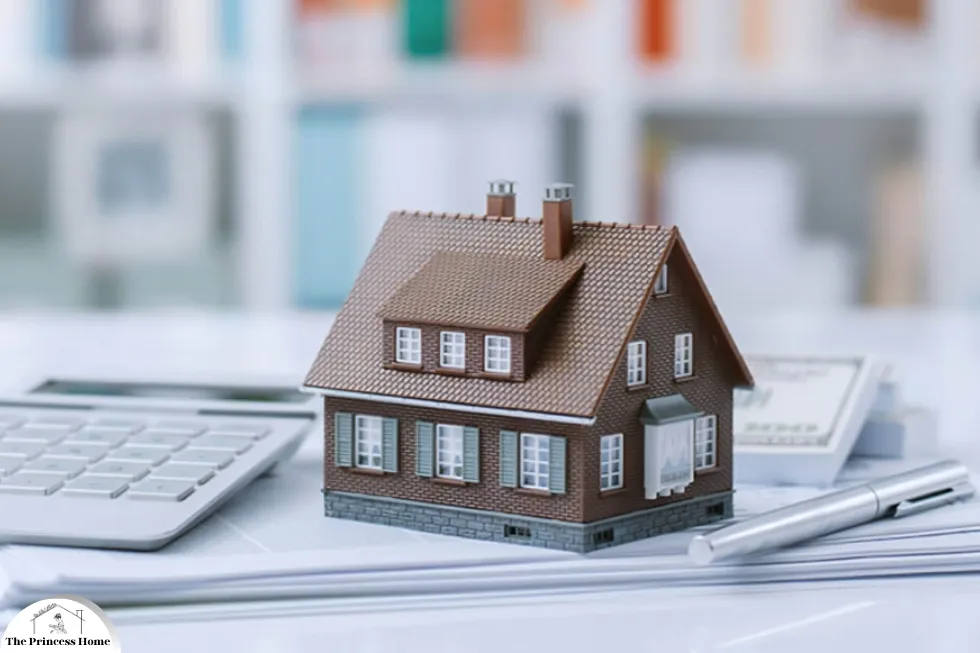
8.Energy Efficiency:
Renovating your home doesn’t have to be purely aesthetic; it can also be practical. Consider making energy-efficient upgrades, such as sealing drafts, adding insulation, or replacing old windows and doors. These improvements can lower your utility bills and increase the long-term value of your home. Energy efficiency improvements are not only practical but can also have long-term benefits for your home’s comfort and value. Here are five helpful points to consider when making energy-efficient upgrades:
Home Energy & Seal Air Leaks:
Before starting any energy efficiency upgrades, conduct a thorough home energy audit to identify areas where improvements can be made. This may involve hiring a professional auditor or using a DIY home energy audit kit. Identify sources of energy waste such as drafts, inadequate insulation, and inefficient appliances. Seal air leaks and drafts around windows, doors, and other openings to prevent heat loss and improve energy efficiency. Use weather stripping, caulking, or foam sealant to seal gaps and cracks in walls, windows, and doorframes. Pay special attention to areas where pipes, wires, and vents penetrate the walls.
Insulation Windows &Doors:
Adding insulation to your home is one of the most effective ways to improve energy efficiency and reduce heating and cooling costs. Insulate attics, basements, and crawl spaces to prevent heat transfer and maintain consistent indoor temperatures. Consider upgrading to high-efficiency insulation materials such as spray foam or blown-in cellulose for maximum effectiveness.
Replace old, drafty windows and doors with energy-efficient models to improve insulation and reduce heat loss. Look for windows and doors with ENERGY STAR® ratings, which indicate they meet strict energy efficiency guidelines set by the Environmental Protection Agency (EPA). Consider features such as double or triple-pane glass, low-emissivity coatings, and insulated frames for maximum energy savings.
Efficient Appliances:
Replace old, inefficient appliances with ENERGY STAR® certified models to reduce energy consumption and lower utility bills. Look for energy-efficient refrigerators, dishwashers, washing machines, and water heaters that use less energy and water while still delivering high performance. Consider upgrading to smart appliances with advanced energy-saving features and programmable settings.
By implementing these helpful points and making energy-efficient upgrades such as sealing drafts, adding insulation, replacing old windows and doors, and investing in energy-efficient appliances.

9.Research Discounts &Coupons:
Keep an eye out for sales, discounts, and coupons from local home improvement stores. Timing your purchases to coincide with sales events or using coupons can result in significant savings. Many stores also offer loyalty programs that provide additional discounts and benefits to regular customers. Here are some helpful points to consider when researching discounts and coupons :
Newsletters & Media:
Subscribe to local home improvement store newsletters to receive updates on sales, promotions, and exclusive discounts. Subscribers often gain early access to special offers and events, helping you save on home projects. Follow your favorite home improvement stores on social media platforms like Facebook, Twitter, and Instagram to stay updated on the latest deals and promotions. Stores often announce sales and offer exclusive discounts to their social media followers, so be sure to check your feeds regularly for updates.
Check Websites &Programs:
Visit the websites and download the mobile apps of home improvement stores to browse current sales, view digital flyers, and access exclusive deals and coupons. Some stores also offer digital coupons that can be scanned directly from your smartphone at checkout for instant savings. Enroll in loyalty programs offered by home improvement stores to earn rewards, discounts, and special perks with your purchases. Many stores offer free loyalty programs that provide members with benefits such as exclusive discounts, birthday rewards, and points-based rewards for every dollar spent.
Purchases Strategically:
Plan your home improvement purchases around major sales events like Black Friday, Memorial Day, Labor Day, and end-of-season clearance sales to maximize your savings. Keep an eye out for special promotions such as buy-one-get-one deals, clearance markdowns, and bundle discounts that can help you save even more on your purchases.
By following these helpful points and staying vigilant for sales, discounts, and coupons from local home improvement stores, you can save money on your renovation projects and stretch your budget further.
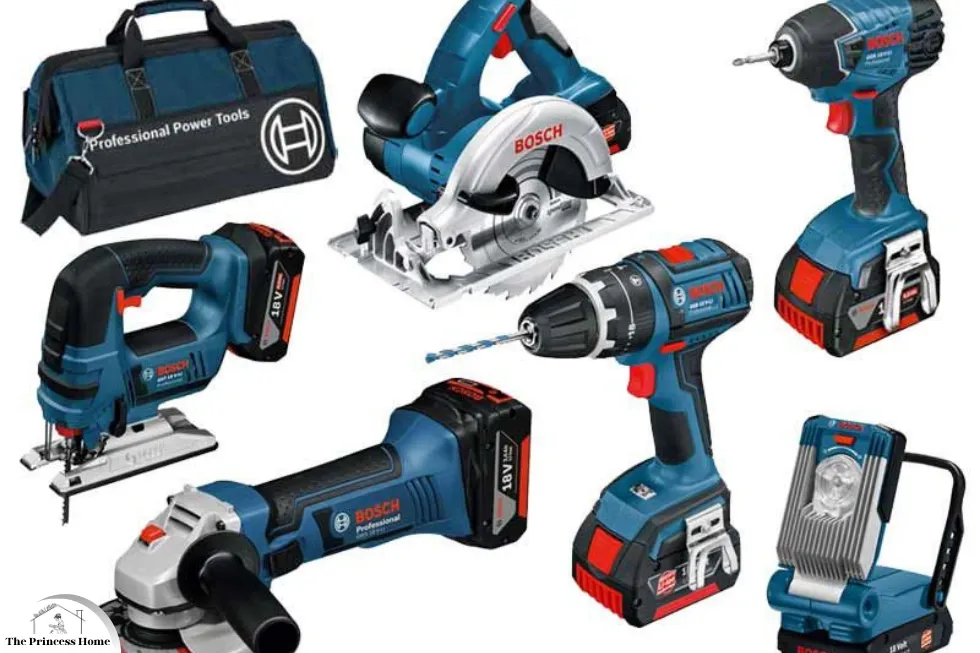
10.Borrow or Rent Tools:
If you need specialized tools or equipment for your renovation project, consider borrowing them from friends or neighbors or renting them from a tool rental service. This will save you the cost of purchasing tools that you may only use once. borrowing or renting tools can be a smart way to save money on your renovation project. Here are five helpful points to consider:
Assess Your Needs & Friends:
Before borrowing or renting tools, assess the specific tools and equipment you’ll need for your renovation project. Make a list of the items you require and prioritize them based on importance and frequency of use. This will help you determine which tools are essential to borrow or rent. Reach out to friends, family, and neighbors to see if they have any of the tools you need available for borrowing. Many people are willing to lend out tools they aren’t currently using, especially if it’s for a short-term project. Be sure to return borrowed tools promptly and in good condition to maintain good relationships.
Rental Services & Costs:
If borrowing isn’t an option, consider renting tools from home improvement stores or equipment rental companies. Tool rentals offer affordable daily or weekly rates, giving you access to specialized equipment without the expense of buying. Before renting tools, compare rental costs to purchasing, especially for tools you might reuse. Factor in rental fees, deposits, late return penalties, and potential damage charges. Calculate the total rental cost for your project to ensure it’s the most cost-effective choice.
Safety &Proper Use:
Whether you’re borrowing or renting tools, it’s essential to prioritize safety and proper use. Familiarize yourself with the operation and safety guidelines for each tool before using it, and always wear appropriate protective gear. Follow manufacturer instructions and guidelines to prevent accidents and injuries while working on your renovation project.
By considering these helpful points and exploring options to borrow or rent tools for your renovation project, you can save money on equipment costs and make your project more budget-friendly.

11.Shop Online for Bargains:
Online marketplaces and discount retailers often offer budget-friendly options for furniture, décor, and building materials. Take advantage of online sales, clearance items, and auction sites to find great deals. Additionally, consider purchasing items in bulk for potential discounts. shopping online for bargains can be a fantastic way to save money on your home renovation project. Here are five helpful points to consider:
Research &Sign Up for Email:
Take the time to research different online marketplaces and discount retailers to compare prices and find the best deals. Look for reputable websites that offer a wide selection of products at competitive prices. Don’t forget to factor in shipping costs and delivery times when comparing prices. Subscribe to email newsletters from your favorite online retailers to receive exclusive discounts, promotions, and notifications about upcoming sales. Many retailers offer special discounts to subscribers or provide early access to sales events, so be sure to sign up to stay informed about the latest deals.
Clearance & Auction Sites:
Browse the clearance and sale sections of online retailers to find discounted furniture, décor, and building materials. Clearance items are often discounted to make room for new inventory, so you can find great deals on high-quality products that may be slightly outdated or discontinued. Consider using online auction sites to bid on furniture, décor, and building materials at discounted prices. Auction sites often feature a wide range of items from various sellers, allowing you to find unique pieces and potentially score big savings. Be sure to set a budget and stick to it when bidding to avoid overspending.
5.Buy in Bulk for Discounts:
If you’re purchasing building materials or supplies for a large renovation project, consider buying in bulk to take advantage of potential discounts. Many online retailers offer bulk pricing or volume discounts for purchasing multiple items, so buying in bulk can help you save money in the long run. Just be sure to calculate the total cost per unit to ensure you’re getting the best deal.
By following these helpful points and shopping online for bargains, you can save money on furniture, décor, and building materials for your home renovation project.

12.Create an Accent Wall:
If you want to add a burst of color or a unique design element to a room, consider creating an accent wall. Using wallpaper, reclaimed wood, or a bold paint color on one wall can be a cost-effective way to give the space a fresh and distinctive look without having to paint the entire room. Creating an accent wall can indeed transform the look and feel of a room. Here are five helpful points to consider when creating an accent wall:
Right Wall & Material:
Select the wall in the room that you want to serve as the focal point. Typically, this is the wall that draws the most attention or the one that you want to highlight, such as the one behind the bed in a bedroom or the wall opposite the entryway in a living room. Decide on the material you want to use for your accent wall. Options include wallpaper, reclaimed wood, bold paint colors, textured finishes, or even a combination of these elements. Choose a material that complements the room’s overall design and reflects your personal style.
3.Room’s Aesthetic &Design:
Take into account the existing color scheme, furniture, and décor in the room when choosing the accent material. The goal is to create a cohesive look that enhances the room’s aesthetic rather than detracting from it. Choose colors and patterns that harmonize with the existing elements in the space. Before starting the project, carefully plan the design of your accent wall. Determine whether you want a solid color, a pattern, or a textured finish. Consider using painter’s tape or creating a mock-up to visualize the design before committing to it. This step will help ensure that you achieve the desired look and feel.
The Wall & Materials:
Properly prepare the wall and materials before beginning the installation process. This may involve cleaning the wall surface, sanding rough spots, applying primer (if necessary), and gathering all the tools and materials you’ll need for the project. Follow the manufacturer’s instructions for preparing and applying the chosen accent material.
By considering these helpful points and taking the time to plan and execute your accent wall project carefully, you can enhance the visual appeal of any room in your home.
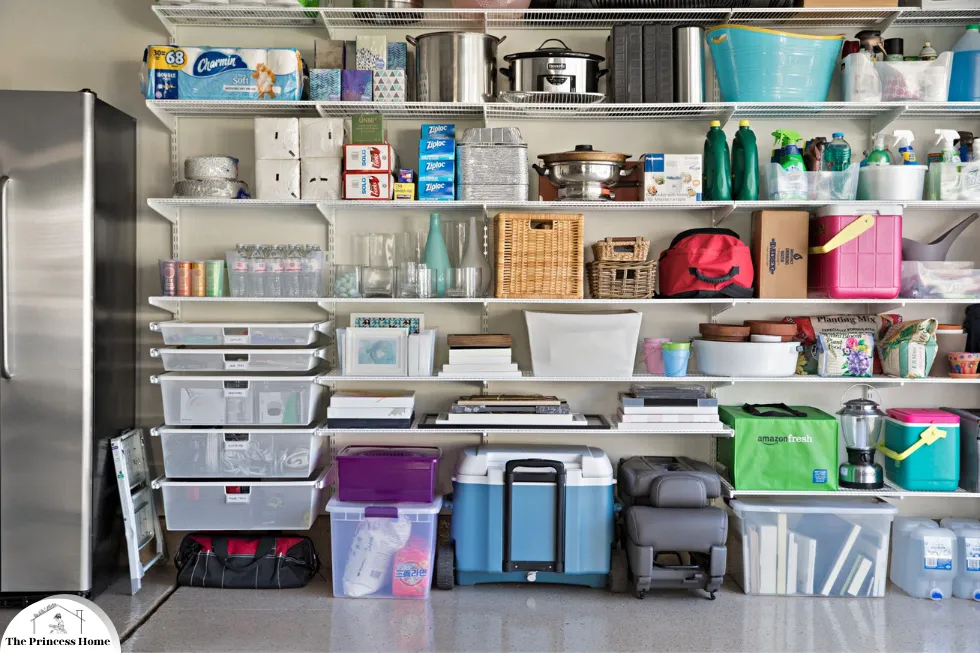
13.Build Custom Storage:
Maximizing storage space in your home can often be accomplished with custom-built shelves, closets, or cabinets. DIY or hire a carpenter to design and build custom storage solutions tailored to your specific needs. This can help keep your home organized and clutter-free. custom-built storage solutions can make a significant difference in organizing your home efficiently. Here are five helpful points to consider when building custom storage:
1.Assess Your Needs & Design:
Before designing custom storage solutions, assess your storage needs in each room. Identify areas where clutter tends to accumulate and determine what types of items need to be stored. Consider factors such as the size and layout of the space, as well as any specific storage requirements for different items. Collaborate with a carpenter or design your own custom storage solutions based on available space, storage needs, and aesthetic preferences. Incorporate features like adjustable shelves, built-in drawers, and hidden compartments to enhance functionality and organization.
Maximize Space Efficiency:
Make the most of every inch of available space when designing custom storage solutions. Consider incorporating vertical storage options such as floor-to-ceiling shelves or wall-mounted cabinets to utilize vertical space. Use corner shelves, under-bed storage, and overhead racks to maximize storage capacity in smaller rooms.
By considering these helpful points and building custom storage solutions tailored to your specific needs, you can maximize storage space in your home and keep it organized and clutter-free.

14.Reimagine Furniture Layouts:
Sometimes, simply rearranging the furniture in your home can provide a refreshing change. Experiment with different layouts to maximize space and functionality. You might discover that a new arrangement can create a better flow and atmosphere in your living areas. Reimagining furniture layouts can breathe new life into your living space without any major renovations. Here are five helpful points to consider when rearranging your furniture:
Space & Define Zones::
Start by assessing the layout and dimensions of each room in your home. Consider factors such as natural light, traffic flow, focal points (like windows or fireplaces), and existing architectural features. Take measurements of the room and existing furniture to ensure the new layout will fit comfortably. Determine the primary functions of each room and create distinct zones for different activities, such as lounging, dining, working, or entertaining. Arrange furniture in each zone to optimize usability and comfort while maintaining clear pathways and visual cohesion.
Layouts & Traffic Flow::
Don’t be afraid to experiment with different furniture arrangements to find the most functional and aesthetically pleasing layout for each room. Try placing larger pieces, such as sofas and armchairs, at different angles or moving them away from walls to create a more dynamic and inviting space. Pay attention to traffic flow patterns and ensure that furniture arrangements allow for easy movement throughout the room. Avoid blocking doorways, windows, or other entryways, and leave enough space between furniture pieces for people to walk comfortably without feeling cramped or restricted.
Balance &Symmetry:
Strive for balance and symmetry in your furniture layout to create a harmonious and visually appealing arrangement. Arrange furniture symmetrically around focal points or anchor pieces, such as coffee tables or area rugs, to create a sense of balance and cohesion. Use visual cues such as color, texture, and scale to create a cohesive look that ties the room together.
By considering these helpful points and reimagining furniture layouts in your home, you can create a fresh and inviting atmosphere that maximizes space and functionality.
Conclusion
there are countless ways to renovate your home on a budget if you’re willing to be creative and resourceful. By carefully planning, prioritizing, and considering cost-effective alternatives, you can achieve a remarkable transformation of your living space without straining your finances. Home improvement should be an enjoyable and fulfilling process, and with these economical strategies, you can make your vision a reality without breaking the bank.
Here are some frequently asked questions related to renovating your home on a Economical.
Q1: How can I set a Economical for my home renovation project?
A1: Setting a budget for your home renovation project begins with assessing your financial situation and determining how much you’re willing to spend. Make a list of your renovation priorities, and research the costs associated with each. Be realistic about what you can afford, and consider building in a contingency fund for unexpected expenses.
Q2: What are some common DIY home renovation projects for beginners?
A2: DIY home renovation projects suitable for beginners include painting rooms, installing new light fixtures, upgrading cabinet hardware, adding an accent wall, and assembling ready-to-assemble furniture. There are numerous online tutorials and resources to guide you through these tasks.
Q3: How can I find quality second-hand furniture and decor on a Economical ?
A3: You can find budget-friendly furniture and decor at thrift stores, garage sales, online marketplaces like Craigslist or Facebook Marketplace, and by joining local buy/sell/trade groups. Also, consider upcycling or repurposing items you already own or find.
Q4: Are there any cost-effective options for kitchen renovations?
A4: Yes, there are several Economical -friendly options for kitchen renovations. You can consider painting or refinishing cabinet doors, updating the backsplash, changing hardware, or creating an open shelving area. Focusing on small, impactful changes can transform the kitchen without a complete remodel.
Q5: How can I make my home more energy-efficient on a Economical ?
A5: To make your home more energy-efficient on a budget, you can start by sealing drafts and adding weatherstripping to doors and windows. Installing additional insulation and using energy-efficient LED bulbs are also affordable ways to reduce energy consumption.
Q6: What are some money-saving tips for buying building materials and tools?
A6: Look for sales and discounts at local home improvement stores, and consider using coupons. Buy materials in bulk if possible for potential discounts. When it comes to tools, you can borrow or rent them from friends, neighbors, or tool rental services to save on costs.
Q7: How can I avoid overspending during a renovation project?
A7: To avoid overspending, stick to your budget and prioritize your renovation goals. Make a detailed plan and carefully research the costs of materials and labor. Be prepared for unexpected expenses by including a contingency fund in your budget.
Q8: What are some creative ways to add personality to my home without spending a lot?
A8: You can add personality to your home on a budget by creating an accent wall with paint or wallpaper, using area rugs to define spaces, and incorporating unique decor items or DIY projects. Reimagining furniture layouts and borrowing or swapping decor with others can also introduce a personal touch to your space.
Q9: Is it essential to hire professionals for any part of the renovation process?
A9: While many renovations can be done as DIY projects, some may require professional expertise. Electrical and plumbing work, structural modifications, or any task beyond your skill level should be handled by professionals to ensure safety and code compliance. It’s essential to know your limits and seek expert advice when needed.
Q10: Are there government incentives for energy-efficient home improvements?
A10: In some regions, there are government incentives, grants, or tax credits available for energy-efficient home improvements. Research your local or national government programs to determine if you qualify for any financial assistance when making energy-efficient upgrades to your home.




